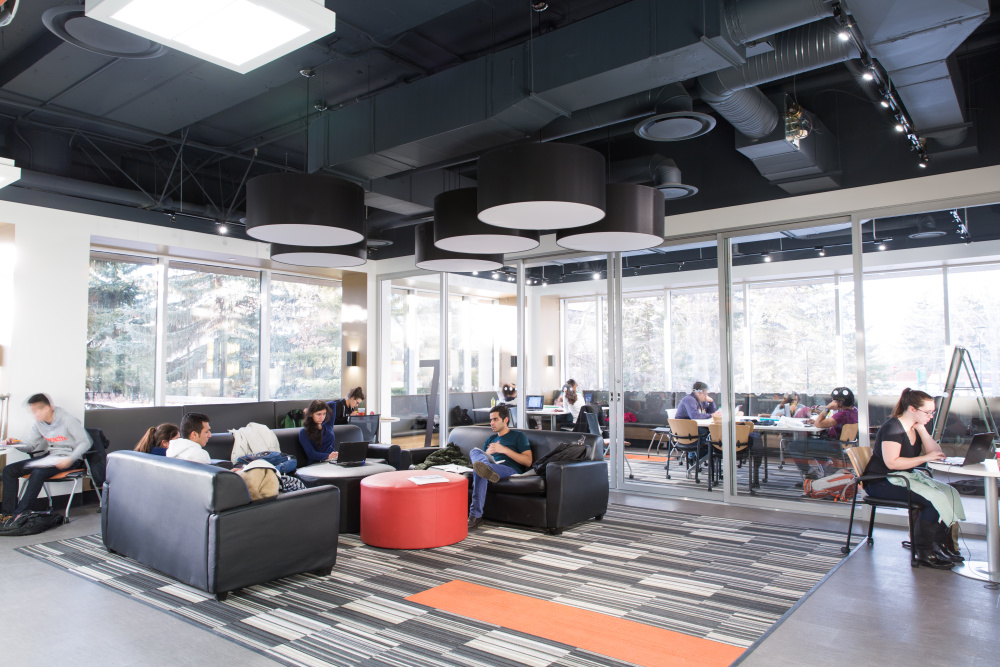Inventory of Promising Practices
CATEGORY 6. USING TECHNOLOGY IN FIELD EDUCATION

Technology has already drastically altered the social work practice environment in many ways. Ensuring the adequate integration of technology into field education will help students familiarize themselves with an ever-changing practice space.
Practice 1:
Online platforms for meeting and information sharing such as Zoom and Microsoft Teams
Exploring the creative use of technology by using Zoom and other online platforms for meetings and information sharing.
- “Right now, we’ve actually seen things like Zoom [and] Microsoft Teams to be able to be the way that we connect right? The students are really eager, and they’re interested in that, and that’s what we’re here for is to help them achieve their learning goals.” (Interview Participant, Prairie Region)
- “I mean, I was not a fan of video platform meetings initially. Now I kind of like it! I found that we’ve been having some town hall meetings with students. Checking in, how you doing – never been able to do that before. Orientation used to cost us some money, to rent a hall, to accommodate all the field instructors and students. Now we just do it online. So, I’m learning some stuff that way about virtual. And the last time we met with all the students we’re talking about how we kind of look at this, but what kind of skills, gifts are coming out of this pandemic? (Interview Participant, Prairie Region)
- “We’ve always thought about preparing students for practice, and that was always in person. And, I think now recognizing that, no, practice can actually happen virtually, it can be online. So, how do we now prepare to develop those skills as a virtual social worker? It presents a new opportunity to think about the nature of social work practice a bit differently, and I’d say with that is the nature of practicum and field placements. To be a social worker today in social work education means you need to have virtual online skills and in-person skills. …I would say that really kind of pushes us to think outside of the box, outside of like this is my office and this is where I work, that geographic location. …And coming together online in Zoom has broken down some of those barriers that maybe were kind of imagined barriers before, even though we could have used the technology, but we chose not to.” (Interview Participant, Prairie Region)
Practice 2:
Developing digitalized trainings that are accessible across Canada
Offering digitalized training and education to help bolster attendance at workshops to save resources and reduce costs.
- “We do five workshops during the eight months of the placement, so we have those people attending virtually or workshops. And the liaisons said “it can’t be done! We can’t do it virtually. How do you do it? We always have the classroom over blah blah blah blah. I’m embarrassed to say we had a week…Now, yeah, you’re not seeing a difference from classroom or online. And the attendance has been–there’s been no dropouts where as in the past, yes, there have been a couple” (Interview Participant, Prairie Region)
- “And then like I said, like virtual delivery and virtual education…has to become a part of the mainstream education on how to do those services in a virtual environment” (Interview Participant, Prairie Region)
- “In conjunction with that, making sure that there were opportunities online. So, virtual opportunities for [student] to practice their skills and increase their knowledge as part of their practice. So, we have a whole list now and it’s growing all the time of incredible training opportunities that are offered virtually, so that would be in addition to their volunteerism in different organizations.” (Interview Participant, Prairie Region)
Practice 3:
Technological innovations in field education
Ways in which technology can be utilized in new and innovative ways to expand learning in field education.
- “[Students are] going to be asked to do their portfolio using digital storytelling and, hopefully, that’s going to have a lot more bang for their buck than just doing a PowerPoint presentation.” (Interview Participant, Prairie Region)
- “Students involved in your digital storytelling project. I mean, you could see just the power of that, so I’m keen to learn more about that now that I’ve heard from students who are participating.” (Interview Participant, Prairie Region)
- “I think it’s imperative that our new, particularly our new practicum students, learn online techniques… I mean, we’re not even having a choice about that. But I think should we have a choice again, I know in the clinical world, my own clients, for example, love the online thing. I don’t think mine, the ones I have now, wouldn’t want to go back to face to face because they always had to do rush hour traffic…” (Interview Participant, Prairie Region)
- “The world has totally changed this year last year. Now […] we’re doing Telehealth that was a lot of innovation, at least for us in a very short period of time. Last year, our students participated, and we did over 45,000 service hours or almost around 45,000 clinical hours and our students were a big part of that. And their outcomes were even better than the year before. So, the learnings about Telehealth have been really critical and I think that as a profession we’re going to embrace that too, we’re not going to be going back to the world as it was. So, we’re going to need to develop other skills for Telehealth and other protocols processes and standards.” (Interview Participant, Prairie Region)
Read Next: CATEGORY 7: MACRO-LEVEL PLACEMENTS





